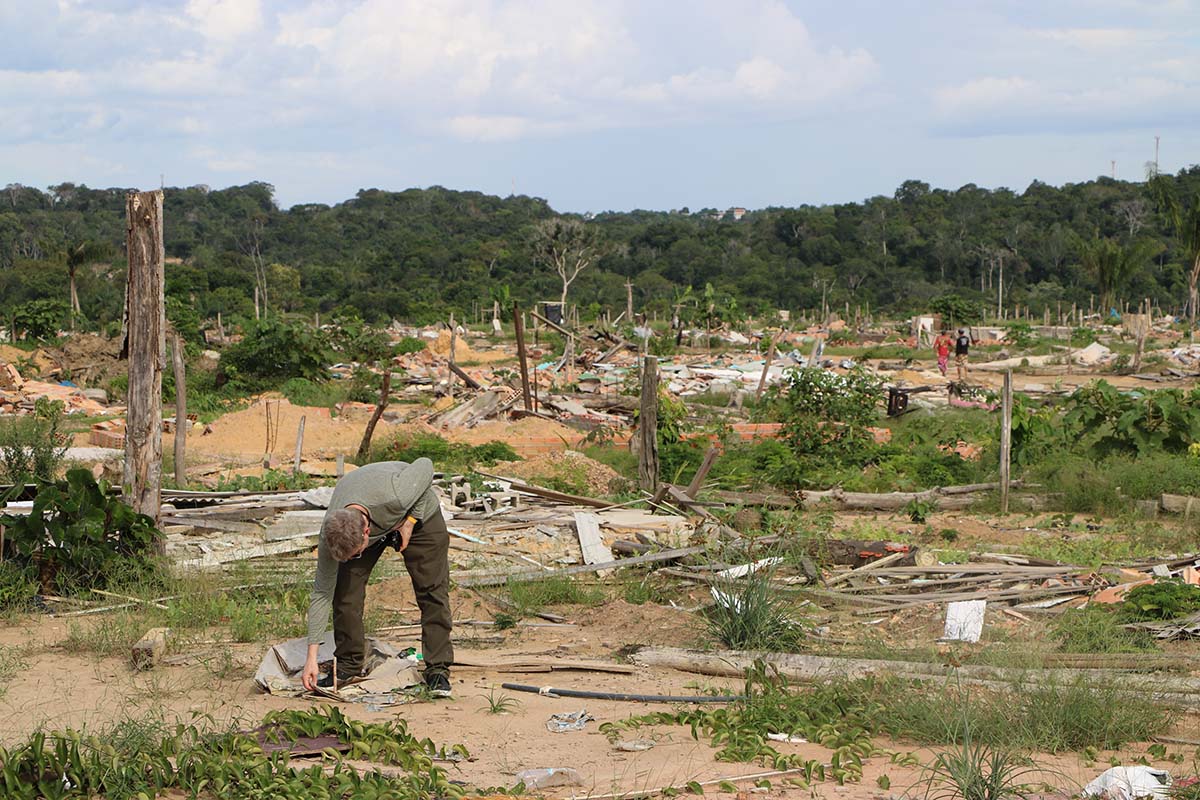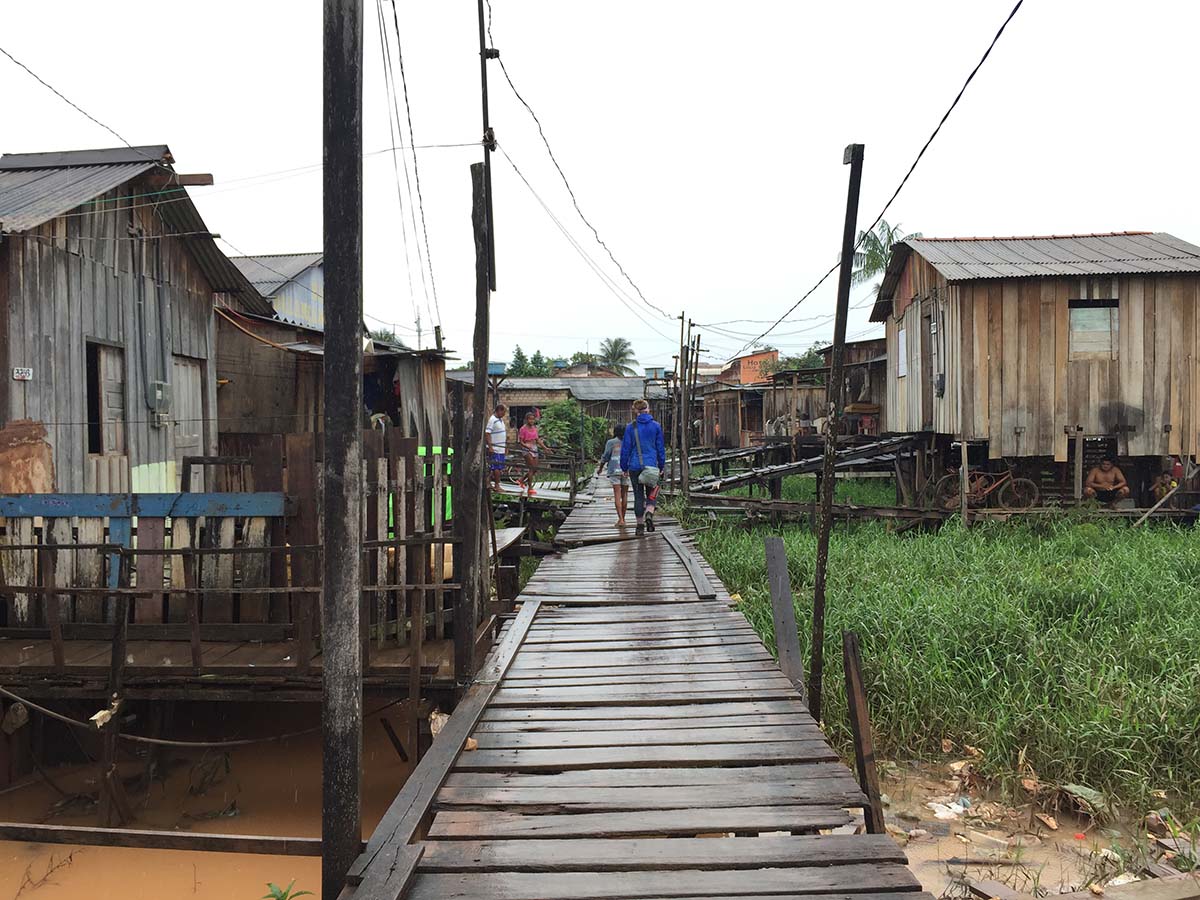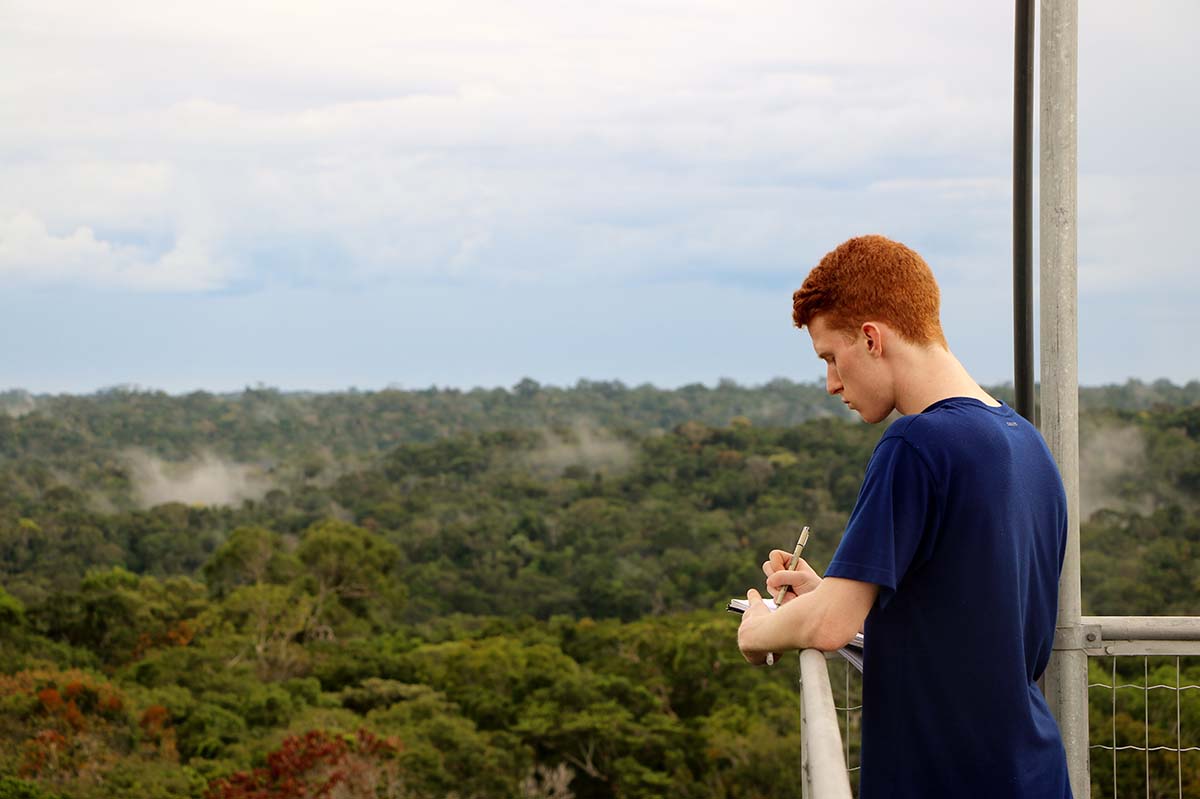Mellon seminar tours a changing, urbanized Amazon
By Rebecca Bowes

A 10-day journey to cities in the Brazilian rainforest gave students a firsthand look at the complex conditions of urbanization in the Amazon. The field trip in March, part of the spring seminar Forest Cartographies, focused on issues of community, housing, resettlement, deforestation, political ecology, anthropology and archaeology.
Forest Cartographies is the fifth in a series of Mellon Seminars in Architecture, Urbanism and the Humanities, fostering intellectual exchange between arts, humanities, social sciences and design disciplines. Instructors Tao DuFour, architecture, and Bruno Bosteels, Romance studies, encouraged students to approach the class from their diverse disciplinary perspectives and interests.
“We wanted to keep the seminar very open and dialogical, and encourage cross-pollination of disciplines as students develop individual projects of their own design,” DuFour said.
Bosteels said he and DuFour “strove to open up a variety of debates organized around thematic clusters” including resource extraction economies “that have supported new left-wing governments in the region” and human ecology.
Organized into three segments, the trip provided insight into rainforest urbanization students had only considered theoretically.
“The scholarly readings and discussions we focused on in class were more deeply explored during our 10 days in the Amazon,” says Rachel Odhner, a doctoral candidate in the field of anthropology. “We had the opportunity to experience the concreteness of these debates and connect the texts and classroom experience to people’s realities.”

The first few days were spent in Manaus, capital of the state of Amazonas, where students attended lectures at Museu da Amazônia and were led by local architects on site visits around the city.
Alia Fierro, MRP ’16, saw firsthand and for the first time the subject of four years of research on social, economic and spatial impacts of Brazil’s federal housing program Minha Casa, Minha Vida. “To witness the scale of such mass, urban disconnect and desolation at the city’s peripheries, and see the physical ramifications of such a massive, one-size-fits-all urban housing policy was very impactful,” she said.
From Manaus, the group traveled to Santarém, a city at the confluence of the Tapajós and Amazon rivers. Archaeological excavations there have uncovered a soil type researchers believe reflects the historical basis of the Amazon’s biodiversity.
“It’s an anthropogenic forest, or what ethnobotanist William Balée [who also traveled with the group] calls a ‘cultural forest,’” DuFour said. “The work of Balée and his colleagues increasingly demonstrates that indigenous communities were able to cultivate the environment in a way that led to an increase in biodiversity.”
Archaeological sites in Santarém were a marked contrast to the planned city on the final leg of the trip – Altamira, which is growing exponentially with the construction of a major hydroelectric dam.

Odhner, whose research examines the politics of water scarcity and climate change, said: “Tracing the effects of the Belo Monte Dam project was the most thought-provoking – and also the most heartbreaking – aspect of the trip. Witnessing firsthand the ways in which this dam is impacting local social-ecological systems and transforming the surrounding landscape helps me to think theoretically about similar themes in my own work, and connect these local and regional changes to [global] questions.”
The group visited the construction site and a gridlike housing project for relocated residents, saw the flood-prone urban slums where displaced people were living, and met with residents, lawyers and other advocates opposing the project.
“The trip … also gave us the opportunity to interact with members of local communities who graciously and candidly described the everyday successes and struggles of their lives and work,” said Hannah Bahnmiller, MRP ’17.
The field trip also included students from the architecture studio Frontier Urbanities/Amazonia, taught by DuFour and visiting critic Paulo Tavares, whose work is focused on Amazonian urbanization.
Rebecca Bowes is a writer/editor for the College of Architecture, Art and Planning.
Media Contact
Get Cornell news delivered right to your inbox.
Subscribe